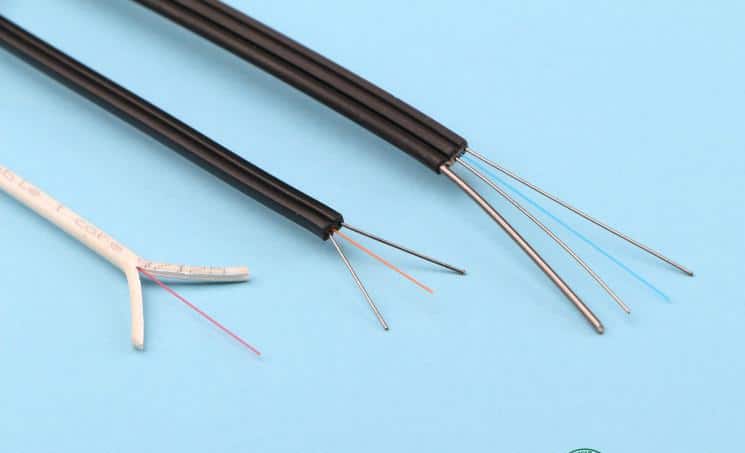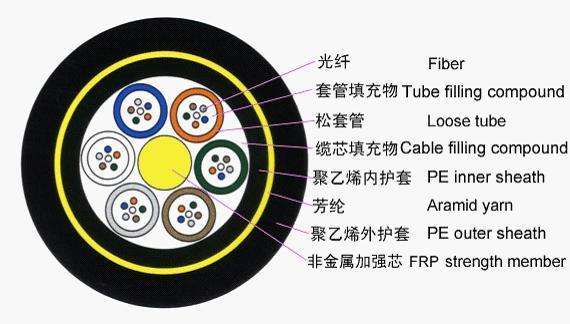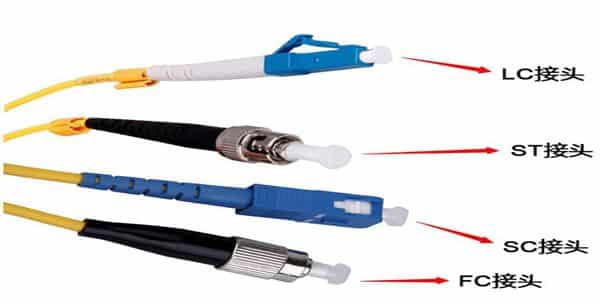
Brief introduction of leather cable
The leather cable is commonly known as an indoor hanging wiring cable. In the case that the domestic fiber access market shows a good momentum of development, fiber access has become a hot spot in the field of optical communications. In the fiber access engineering, the indoor wiring close to the user is the most complicated link. The bending performance and tensile performance of the conventional indoor optical cable cannot meet the requirements of FTTH (Fiber to the Home) indoor wiring.
The access network uses a dish-shaped cable (for indoor wiring) with the optical communication unit (fiber) in the center, two parallel non-metallic reinforcements ( FRP ) or metal reinforcement members placed on both sides , and finally, black or colored poly It is made of vinyl chloride ( PVC ) or low-smoke halogen-free material (LSZH, low-smoke, halogen-free, flame retardant).
Feature
Special bend-resistant fiber to provide greater bandwidth and enhance network transmission performance;
Two parallel FRP or metal reinforcements provide good compression resistance and protect the fiber;
The cable has the advantages of simple structure, lightweight and strong practicability;
Unique groove design, easy to peel, easy to connect, simplify installation and maintenance;
Low-smoke, halogen-free flame-retardant polyethylene sheath or flame-retardant PVC sheath, environmentally friendly.
It can be matched with a variety of field connectors and can be field-proven.
The leather fiber optic cable is characterized by its softness and lightness; it is widely used in the access network; the name of the leather cable: the access network is
introduced into the cable by a butterfly; because of its shape, it is called a butterfly cable. 8-word cable.
product structure
The ordinary leather cable is a standard 8-shaped structure; two parallel reinforcing cores with fiber in the middle; self-supporting leather cable adds a thick steel wire to the structure of ordinary leather cable; overall self-supporting leather The line cable is just one more wire, and the others have not changed.
This type of fiber optic cable has a different structure for each manufacturer. However, it is generally not a metal reinforcing core, and a butterfly-shaped cable is taken as an example. The cross-section is like a butterfly, so it is called. Both sides are reinforcing members in the leather line and optical fibers in the middle.
1. The butterfly-shaped optical cable is divided into indoor and outdoor (inside) and outside, the price difference between the two is large, and the outdoor price is about twice the price of the indoor type. In general, the price factor should be considered when making a specific design. Under normal circumstances, The outdoor fiber optic cable (GYTA-G 652D) is still used outdoors, and the indoor butterfly cable is used for the transition between the two through the fiber box or the joint box.
2. The butterfly cable has a small radius of curvature, lightweight, relatively good bending resistance, easy to fix, and easy termination in the 86 terminal box.
3. Butterfly-shaped fiber-optic cables are available in non-metallic reinforcing members and metal-reinforced members. In view of lightning protection and strong electrical interference, indoor non-metallic reinforcing members butterfly cables should be used.
4, indoor butterfly cable has 1 core, 2 core, 3 core, 4 core, and other specifications, residential users should choose single-core cable for butterfly-shaped household cable; business users can access butterfly cable for 2–4 Core cable design.
The connection has a cold connection and welding.
The cold connection is to install the fiber end face by connecting the fiber end face and connect it with the flange head.
Applications
For indoor wiring, the end user directly uses the cable;
Used for building incoming optical cables;
User wiring for FTTH.
Executive standard
YD/T1997-2009 The access network uses a dish to introduce fiber optic cable.
Structural parameters
| Reinforcement type | Cable size (mm) | Allowable tensile force (N) long/short term | Allowable crushing force (N/100mm) long/short term |
| Non-metallic reinforcement | 3.0×2.0 | 40/80 | 500/1000 |
| Metal reinforcement | 3.0×2.0 | 100/200 | 1000/2000 |
| coding | product name | Description |
| NFC8101F | Single core single mode indoor leather cable | OS1, non-metallic reinforcement, flame retardant PVC jacket |
| NFC8102F | Double core single mode indoor leather cable | OS1, non-metallic reinforcement, flame retardant PVC jacket |
| NFC8102FL | Double core single mode indoor leather cable | OS1, non-metallic reinforcement, low smoke zero halogen LSZH jacket |
| NFC8102 | Double core single mode indoor leather cable | OS1, metal reinforcement, flame retardant PVC jacket |
| NFC8102L | Double core single mode indoor leather cable | OS1, metal reinforcement, low smoke zero halogen LSZH jacket |
Disclaimer: All information indicated as other sources is transferred from other platforms, the purpose is to convey more information, does not represent the views and positions of this site. Please contact us if there is any infringement or objection.



